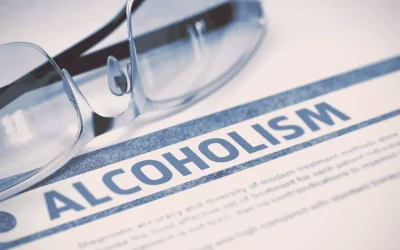Content
This can lead to excessive daytime sleepiness and other problems the next day. Drinking alcohol can also increase your tolerance, causing you to drink more to experience its sedative effects. Alcohol intake is able to modulate the same circuits that underlie the adaptive response to stress [70,71]. It has https://ecosoberhouse.com/ been shown that, after acute exposure to stress or moderate doses of alcohol, dopaminergic and hypothalamic circuits recover their normal basal tone allowing a normal response to novel stimuli [72]. Furthermore, binge drinking is able to generate tolerance to both stress and alcohol intake [71,77,78].

An exploratory analysis of the longitudinal data from the National Consortium on Alcohol and Neurodevelopment in Adolescence study5 found a different pattern of sleep/circadian predictors of binge alcohol severity at middle- and high-school age time points versus post–high-school age time points. This difference could reflect context, given systematic early school start times versus more flexibility in schedules after high school (i.e., college and/or employment), but more research is needed to replicate and further clarify this finding. Symptoms of co-occurring disorders may heighten when you stop drinking alcohol. This typically happens to people who use alcohol to cope with the effects of mental health disorders.
FAQs about alcohol and sleep
This chronotype is commonly seen in adolescents and those with psychiatric disorders. Conversely, the “morning” type individual (greater morningness) prefers an earlier bedtime and an earlier rise time. As children grow older and approach adolescence, many of them may experience a shift towards eveningness, a phenomenon seen commonly in boys [11]. Beyond the second decade of life, individuals alcohol induced insomnia tend to revert back towards morningness [12]. The clinical significance of eveningness is that emerging evidence has linked it with an increased risk for psychopathology such as alcohol misuse [5]. In addition to psychiatric comorbidity, such as depression, researchers have identified other variables that can influence sleep measures in recently abstinent alcoholic patients.

As the names imply, long-sleep mice have longer sleep times than short-sleep mice following acute exposure to alcohol. At the age when the animals’ differential sleep responses emerge, long-sleep mice have lower basal norepinephrine levels in their brain stems than do short-sleep mice (French et al. 1995), suggesting that norepinephrine activity provides some protection against alcohol-induced sedation in short-sleep mice. Furthermore, low alcohol doses, which can be stimulating in humans (Roehrs and Roth 1995), have been shown to raise nor-epinephrine levels in the cortex of rats (Rossetti et al. 1992). Conversely, higher alcohol doses, which can be sedating in humans, have been shown to lower norepinephrine release in rats. Thus, the dose-dependent effects of alcohol on sleep seem to parallel the dose-dependent effects of alcohol on norepinephrine release.
Sustained Abstinence
In a frequently cited study, decreased REM sleep latency and increased REM % was seen at 27 months into recovery (Drummond et al., 1998). These findings contrast with lack of REM sleep abnormalities reported in 2 other studies, as compared to healthy control subjects (Williams and Rundell, 1981, Schiavi et al., 1995). Discrepancies in REM sleep may reflect sample differences, duration of sobriety (where the REM sleep may have normalized over time) (Williams and Rundell, 1981), or an interaction between REM sleep architecture and a circadian disruption (Imatoh et al., 1986).

